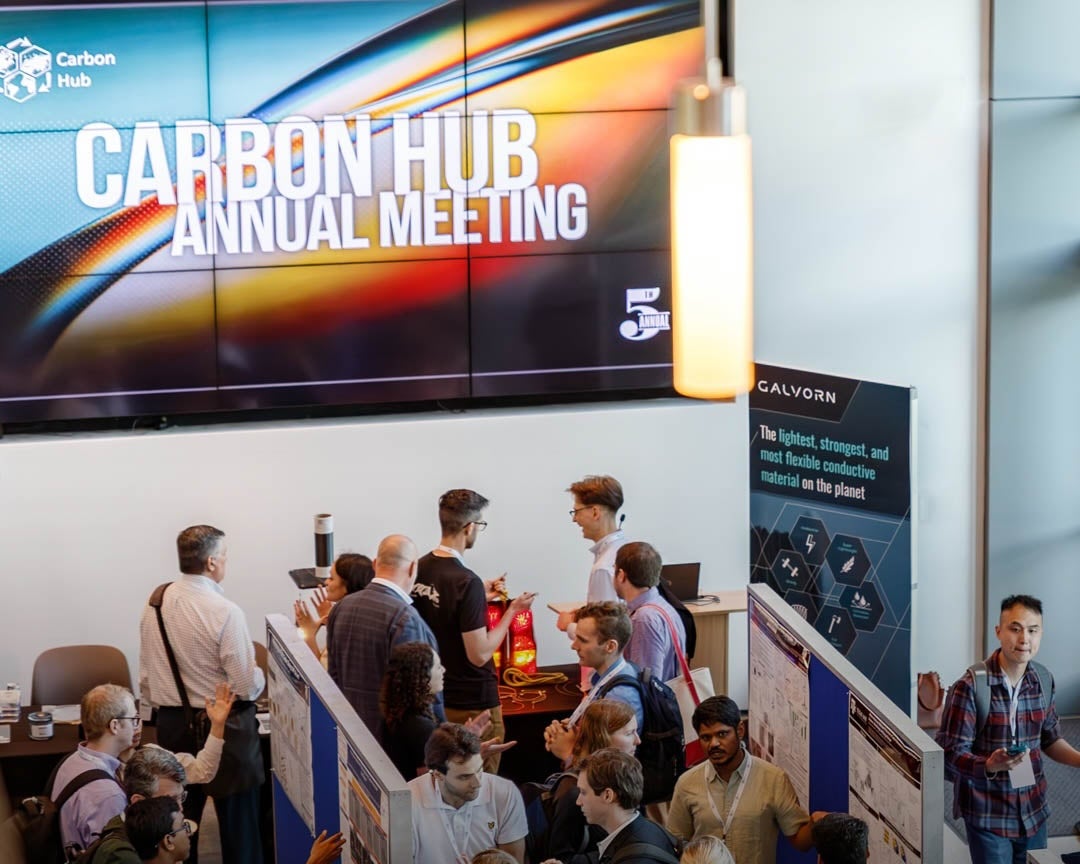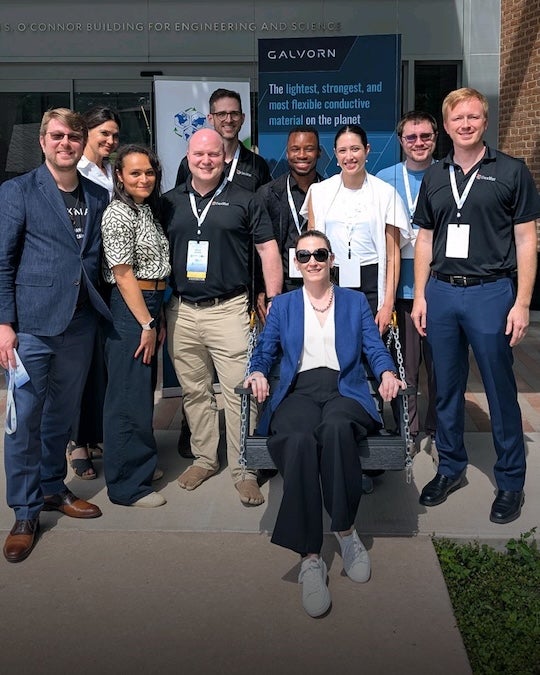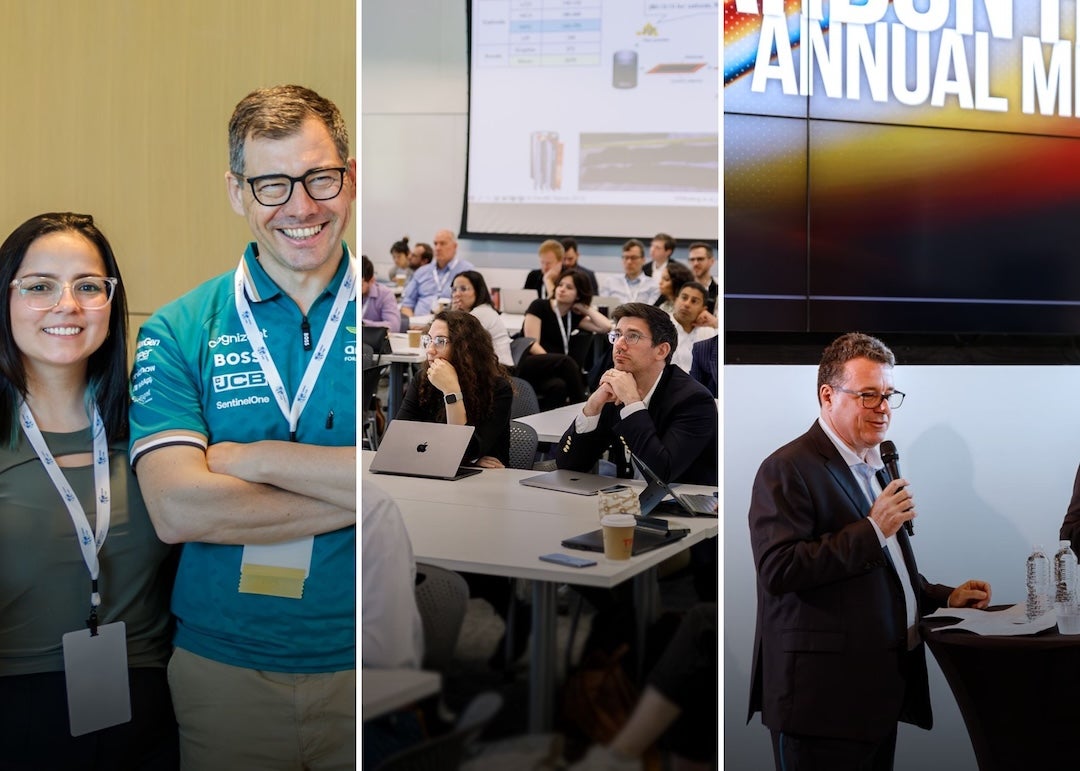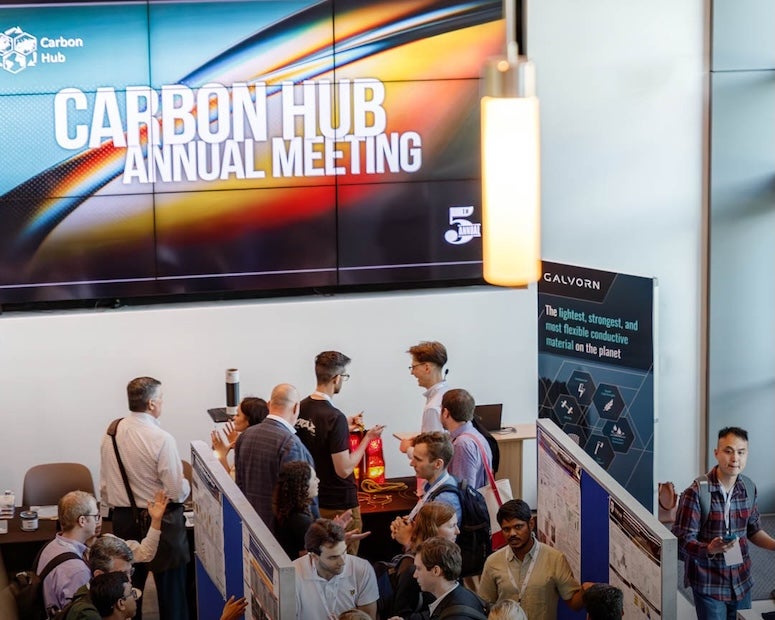
As the world races to address the climate crisis, a coalition headquartered at Rice University is taking a radically collaborative approach to one of the toughest challenges: how to decarbonize industry while at the same time boosting manufacturing, improving infrastructure and securing the supply chains for the energy and materials we rely on every day.
The Carbon Hub, a Rice-led initiative founded five years ago, is bringing together scientists, industry leaders, federal labs and policymakers from across the globe to reimagine the role of hydrocarbons — not as fuels to be burned but as sources of clean hydrogen and advanced carbon materials.
“Building a sustainable economy that allows people to meet the standards of living they expect, while being mindful that we only have one Earth, requires bringing everyone to the table in open collaboration,” said Marie Contou-Carrere, executive director of the Rice Sustainability Institute and the founding executive director of the Carbon Hub. “This transition won’t happen in a silo. It has to be collective.”

That vision was on full display at the Carbon Hub’s annual meeting May 12-13 at Rice. Now in its fifth year, the gathering drew more than 250 attendees — up from just 40 or 50 in its early days — and featured technical updates, road map planning and big-picture panels exploring public-private partnerships and global decarbonization efforts. Keynote speakers and participants included collaborators of the Carbon Hub from more than 15 institutions; Rice faculty and experts from across numerous disciplines including engineering, science, architecture and the Baker Institute for Public Policy; leaders from Huntsman, Prysmian Group, SABIC, The Kavli Foundation, Novo Nordisk Foundation CO₂ Research Center, Shell and Aston Martin; and energy policy experts and materials scientists from across academia and industry.
“We’ve made strong progress in building a community, advancing technology and getting the word out, and we’ve received significant support from both corporations and government,” said Matteo Pasquali, director of the Carbon Hub, the A.J. Hartsook Professor of Chemical Engineering and professor of materials science and nanoengineering and chemistry at Rice. “If you stay within the existing frameworks, inevitably you face tradeoffs between economic and environmental benefits. Because we went outside the mainstream view of carbon, we are proposing solutions that bring climate benefits while also opening opportunities to boost manufacturing and strengthen supply chain security. That’s why we’re seeing such broad support.”
“This year, it was great to see even more participation from both academia and industry,” said Ricardo Prada Silvy, chief technology officer of CHASM Advanced Materials. “The panels and technical talks were top notch, and that’s what really makes Carbon Hub such a success. I look forward to continuing to participate actively in this community.”
The Carbon Hub’s core idea is deceptively simple: Instead of burning hydrocarbons and releasing carbon dioxide, why not split them into hydrogen for clean energy and solid carbon for materials? This process could address multiple issues at once, from energy access to emissions to the unsustainable use of critical metals.
“When people talk about the climate transition, they focus on energy,” Contou-Carrere said. “But there’s a materials transition happening too. Our electric vehicles, wind turbines and solar panels are built from materials that are often nonrecyclable, carbon-intensive to produce and sourced from geopolitically unstable regions.”
Carbon-based materials, if developed at scale, could replace emissions-heavy metals like steel, aluminum and copper in structural applications, potentially avoiding gigatons of CO₂. But getting there requires coordinated action across the entire value chain, from hydrogen production to carbon processing, product development, policy and public perception.
“The Carbon Hub is building an essential supply chain,” said Adam Boies, associate professor of mechanical engineering at Stanford University. “It includes people who own hydrocarbons, researchers who convert them, manufacturers who use the materials, policymakers who regulate them and investors who finance them. Everyone needs to be in the room.”
Carbon Hub is distinct not just for its scientific mission but for its structure. It’s a true coalition, intentionally built to include voices across disciplines and borders. Collaborators span the U.S., Spain, Italy, South Korea and the U.K. with academic partners including Rice, Stanford, the Massachusetts Institute of Technology, University of Pennsylvania, Pennsylvania State University, University of California, Santa Barbara and University of Minnesota.
“The Carbon Hub exemplifies how real progress toward sustainability happens — not in isolation but through trusted, long-term partnerships across academia, industry and institutions. It’s one of Rice’s most effective platforms for accelerating the development of scalable, sustainable technologies,” said Luay Nakhleh, the William and Stephanie Sick Dean of the George R. Brown School of Engineering and Computing. “As we work to generate sustainable futures — one of the key drivers in our university’s strategic plan — the Carbon Hub stands as a model for how collaborative, mission-driven research can drive global impact.”
That global scope is matched by a commitment to impact. Since its inception, the Carbon Hub has catalyzed more than $12 million in funding from organizations like the Department of Energy, the National Science Foundation and The Kavli Foundation. A flagship Kavli-funded project has enabled the coalition to expand its efforts on critical basic nanoscience questions, which in turn accelerates the advancement of reactor designs that convert hydrocarbons into solid carbon more efficiently and sustainably with applications ranging from cables to consumer products.
“The Carbon Hub is reimagining the meaning of the carbon nanotube, effectively introducing a new class of materials and a dramatically fresh way to address many critical issues,” said Jeff Miller, nanoscience program officer at The Kavli Foundation. “As such, we wanted to enable the team to identify and study gaps in fundamental science knowledge, because deeper understanding leads to bigger step changes which maximize impact and accelerate outcomes.”

One of the most powerful ideas to come out of the Carbon Hub’s work is the concept of “CO₂ avoidance” rather than just CO₂ reduction. It’s not just about cutting emissions, but instead it’s about designing systems that don’t create them in the first place.
Take hydrogen: While clean to use, it’s not naturally available and must be produced, often through processes that either consume vast amounts of energy or generate harmful by-products. The Carbon Hub’s approach aims to solve that by using methane or biomass to yield hydrogen and carbon materials simultaneously with minimal waste.
“We always ask: Can this solution hit multiple targets at once?” Contou-Carrere said. “Clean energy, lower emissions, better materials, domestic manufacturing, supply chain security, more industrial jobs — that’s the mindset we bring.”
At the annual meeting, participants discussed next steps, identifying gaps in public-private collaboration, advancing new research directions and expanding outreach to communities that may not yet realize how these changes will impact their lives.
“The presentations were incredibly informative for our student participants and have inspired many of them to take a leading role in working toward more community engagement in the next steps of their Rice journey,” said Karyn Fu, a junior at Rice who leads the Civic Immersion: Late Departure program for the university’s Center for Civic Leadership.
One session explored the transformative potential of carbon nanotube (CNT) fibers in next-generation composite materials. Facilitated by Michelle Michot Foss, fellow in energy, minerals and materials at the Baker Institute’s Center for Energy Studies, and Vinod Veedu, assistant vice president for defense research advancement at Rice, the discussion focused on the integration of CNTs to enhance mechanical strength, electrical conductivity and thermal management in nanoengineered composites — particularly in sectors like aerospace and defense. Participants delved into the commercialization challenges of CNT-enhanced materials, including issues of microcracking, interlaminar separation and scalable manufacturing. The conversation also addressed the evolving role of lightweight composites in aviation efficiency, the global competition in advanced materials development and the opportunities for artificial intelligence and machine learning to accelerate design and testing. Panelists and audience members emphasized the need for strategic government investment, defense applications as a proving ground and collaborative efforts to derisk and scale CNT technologies for broader commercial use.
“This was a great annual meeting, and I was impressed by the combination of cutting-edge science and vigorous industrial participation” said Lasse Rosendahl, executive director, professor and CEO of the Novo Nordisk Foundation CO2 Research Center (CORC) at Aarhus University in Denmark. “I look forward to establishing more formal relations between CORC and the Carbon Hub.”
Kenneth B. Medlock III, senior director of the Baker Institute’s Center for Energy Studies, reiterated the need for partnering research with industry.
“I always like to say it is the building block of life,” Medlock said. “I think we all learned that growing up, right? Well, it’s about time we figure out how to use it to support life on this Earth in ways that we haven’t before, and this is where we get into new structures, new materials and new ways of transporting electrons.”

